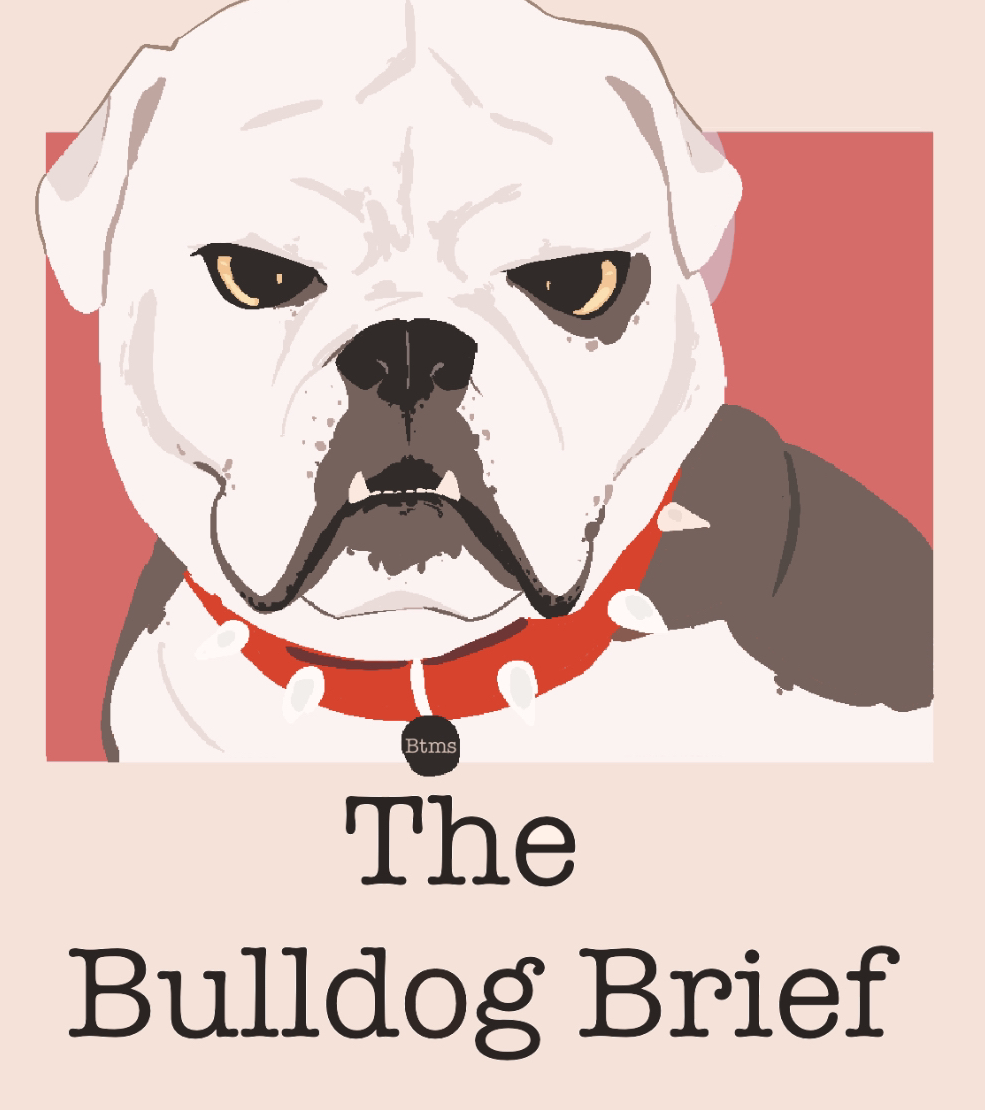The 16 Sites of the Moon: Farouk El-Baz
Learn about the difference between a Muslim and Arab below!
In honor of Arab-American Month, this writer’s edition will feature 2 other notable Arab-Americans besides mine! Make sure to check them out at:
- https://bulldogbrief.org/6451/community-and-belonging/race-and-ethnicity/simon-chetrit-an-arab-american-photographer/
- https://bulldogbrief.org/6494/uncategorized/the-many-talents-of-paula-abdul/
Farouk El-Baz was born on January 2nd, 1938 (That means he’s 85 now!) in Zagazig, Egypt alongside his 8 other siblings, one of them, Osama El-Baz, would become Senior Advisor to Egypt’s former president, Hosni Mubarak. He is an important person who contributed to the successful landing of Apollo 11, which was the vessel to the first men to step on the moon.
His Journey to NASA
Frouk’s involvement with NASA started a little after he got his Ph.D. in the U.S. Before, he taught for a year as a Professor at Assiut University in Egypt for a brief 2 years (1958-1960) and at Heidelberg University in Germany for only a year (1964-1965). He had trouble finding a job back in Egypt, causing him to scour for any odd job. While applying for various jobs in desperation such as mining and oil drilling, he came across a magazine called ‘Physics Today’. He had been getting all types of magazines and flyers related to science and geology at the time, and while flipping through the pages, he (In an interview) recalls seeing a quarter-page ad for Bellcomm, which is a company that provides NASA with people who give technical and management advice for manned space flights. The quarter-page ad in the magazine had said this, “We need geologists to work on the Moon from photographs that have been taken by Lunar Orbiter missions”. Farouk immediately knew he was qualified enough to take the job with his Ph.D. in geology, and decided to apply swiftly. (By the way, he says in an interview that this was the 121st job he applied for, in which he and his wife wrote his letter of application at 11 pm.)
A little later, he was called in for an interview at the office, in which he says he saw Edward C. Nixon, who is the brother of Richard M. Nixon, the 37th president of the United States of America. Although Edward did have a master’s degree in Geology, he had instead chosen to become the head of personnel at Bellcomm because, “Well, I tried to work in geology, I didn’t find anything, I couldn’t, so I moved out and now I’m a personnel guy.”
In the interview, he was explained to by Geologist Bruno Sabels that the job was basically shuffling through Geological data that NASA collected that they didn’t want to deal with. (It’s because the information is complicated, not because it was useless.) After a simple ‘okay’, he was now a worker at Bellcomm. (Although not a major position of course)
Working for Bellcomm and NASA
While working there, Farouk went to daily meetings between Geologists about the moon’s features, in which he states that a person would talk for an hour about a feature, then another person would follow, continuing a boring cycle. After attending 2 of these meetings, Farouk began to feel like these meetings were somewhat useless. Yes, they were discussing moon-related topics like its features, formation, and surface, but the Geologists there weren’t connecting the dots, they were just going over information. And that’s precisely when he decided to take action.
After doing his regular duties related to his job, Farouk would spend his time in a lunar library, which holds information about the moon and things on its surface. Using pictures, information, and samples, he decided that he would list out almost every recorded feature on the moon and write them down on note cards, one by one. He would then arrange the cards in such a way that he could get an idea of where important features on the Moon were. After this grueling process of painstakingly writing down bits of information, (because they had no fancy computers or technology at the time that could do this) he was almost finally at the finish line.
With the arranged notecards done, he first questioned himself: Why does NASA need geologists? The answer he came up with was probably the exact reason why: To select landing sites on the Moon so that they could collect a sample from every type of lunar surface feature. With that out of the way, he began to look for clusters of features that would be good sites for landing and sample collection. Finally, after all that work, he determined that NASA had 16 sites which they needed to take samples from.
With this newfound information, Farouk called up the organizers of the earliest meeting and informed them of what he had found. Interested, the meeting was scheduled swiftly and Farouk began to prepare his viewgraphs, which are large spreads of info. These can be graphs, equations, drawings, or basically anything that will help your point get across. At the meeting, his explanations gained the interest of many Geologists, many of them calling him after the meeting just to ask questions or receive information. As he put it, “Somehow I became a source of information. This kind of got me into my peers as an equal.”
As a foreigner, the moment he was seen as an ‘equal’ was a very important moment for him. Before, he had felt as though he was not part of the moon research group because he was Arab and Egyptian, with the added fact that the Soviets were all over Egypt at the time. (the U.S. did not like the Soviets)He also felt as though he didn’t belong because he didn’t have citizenship in the U.S. at the time because he hadn’t lived there for 3 years yet. In addition, he also says in an interview that he felt out of place because he was just a Geologist, and didn’t necessarily have a background in astronomy, which obviously, relates to the moon and space he was involved with at the time. But this out-of-place feeling is what got him to strive for that acceptance and sense of accomplishment, which he says, “Thus, I had to prove myself essential to be treated with any respect, particularly in the beginning.”
With his incredible research, just a couple years later, Apollo 11 was able to land on the moon and the infamous Neil Armstrong and his buddy Buzz Aldrin (with the help of their pilot Micheal Collins) were able to step foot on the moon for the first time and plant the American flag upon its surface. On the 8-day mission, the crew was able to collect around 47 pounds of space matter and safely bring it (and themselves) safely back to Earth, the mission resulting in a success.
After NASA
After working at NASA for many years after involvement in several other space missions proceeding Apollo 11, Farouk ultimately decided to become a professor at Boston University and an adjunct professor at Ain Shams University in Cairo, Egypt. (Adjunct basically means that he’s part-time, or in a contractual hire relationship.) After the Apollo program ended in 1972, he has also still been involved in NASA’s projects such as directing an Air and Space Museum and acting as a member of the International Astronomical Union, which focuses on understanding astrology more in all aspects, such as research, education, and development. He lives happily in the U.S. with his wife, 4 daughters, and 6 grandchildren.
Awards
He has been awarded many awards because of his amazing achievements over the years, so here are a few of them that are notable!
-The Pioneer Award from the Arab Thought Foundation, which is given to those who leave an influential mark in their field of work.
-The Golden Door Award from the International Institute of Boston, which is given to a person who has contributed to something that greatly benefits American society.
-The Nevada Medal from the Desert Research Institute for his contributions to desert research.
Fun Fact Corner!
-He actually has an Astroid named after him called Asteroid 7371 El-Baz, which was discovered by Eleanor Helin and Schelte Bus in 1978.
-He joined an oil company in 1966 whilst looking around for odd jobs, (Remember where I said in the article he was working at a university in Egypt and Germany for only around a year each? During that time!) and he was actually involved in the discovery of El-Morgan, the first offshore oil field in the Gulf of Suez located at the Northern end of the Red Sea.
-Muslims are traditionally required to travel to Mecca at least once in their lifetime, where they touch the Black Stone, which they believe is sent from the Heavens. From his experience of his pilgrimage to Mecca he made when he was little, Farouk came up with the idea of letting people touch Moon rocks at museums.
A short section on…
What’s the difference between Muslim vs. Arab?
The definition of an Arab is as follows:
In comparison, the definition of a Muslim is as follows:
In summary, Muslims are people who follow the religion of Islam, while Arabs are people who are born into a specific identity. In addition, Muslims can be any race, and speak any language, and the basis of being accepted as Muslim is just to believe in their gods and text and reject every other religion.
Although it makes sense why people might try to use this synonymously because studies found that around 93 percent of all Arabs are Muslims, they are only around 15-20 percent of the Muslim population in the world, which is a whopping 1.9 billion people. The hotspots of this religion include Asia, the northern part of Africa, and the Middle East, the countries with the largest Muslim populations being Indonesia, Pakistan, and India.
~Sources~
https://historycollection.jsc.nasa.gov/JSCHistoryPortal/history/oral_histories/El-BazF/El-BazF_11-2-09.htm
https://www.aljazeera.com/features/2019/7/20/profile-farouk-el-baz-the-egyptian-behind-the-moon-landings
https://en.wikipedia.org/wiki/Farouk_El-Bazhttps://en.wikipedia.org/wiki/Osama_El-Baz
https://sova.si.edu/record/NASM.XXXX.0093#:~:text=Bellcomm%2C%20Inc%20was%20a%20subsidiary,the%20Manned%20Space%20Flight%20Program.
https://arabthought.org/en/arabcreativity/abouthttps://blog.museumofflight.org/dr.-farouk-el-baz
https://www.pewresearch.org/fact-tank/2017/08/09/muslims-and-islam-key-findings-in-the-u-s-and-around-the-world/
https://www.britannica.com/topic/Islamhttps://sacredsites.com/middle_east/saudi_arabia/mecca.html
Meet me, Mika H.
Hi, my name is Mika, and I am an 8th grader at BTMS. I like math and reading webtoons and manga. I also like judging and tasting food,...


